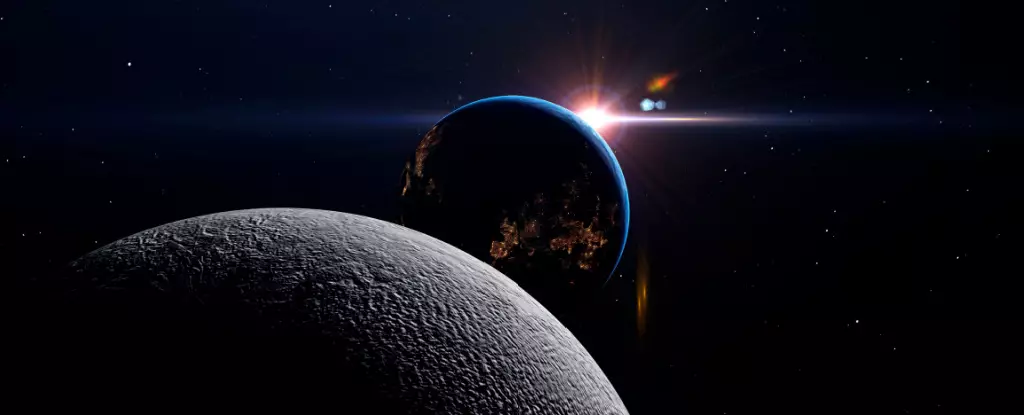When astronauts departed the lunar surface 52 years ago, little did they know that time was ticking by on the Moon at a slightly faster rate compared to that on Earth. The difference may seem minuscule, with the Moon gaining 57 millionths of a second each day, but this finding from NASA scientists could have significant implications for the success of future crewed missions to the Moon and beyond. While the concept of gravity affecting time is not new, measuring these distortions accurately has only become possible in recent years with advancements in technology.
According to Albert Einstein’s general theory of relativity, gravity can influence time, causing it to slow down in areas of higher gravitational pull. The Moon, with only one-sixth of Earth’s gravity, experiences a slight time dilation compared to our home planet. The recent study by NASA scientists led by Slava Turyshev calculated that the Moon gains 57 millionths of a second per Earth day relative to the barycentre of the Solar System, where all celestial bodies orbit. This finding underscores the importance of understanding these subtle time differences for accurate navigation in space missions.
NASA’s Artemis missions aim to return astronauts to the Moon by 2026, paving the way for the establishment of lunar bases that could serve as a launchpad for future missions to Mars. The success of these missions relies heavily on precise time synchronization to ensure navigation systems work seamlessly. Cheryl Gramling, a navigation systems engineer at NASA’s Goddard Space Flight Center, emphasized the significance of precise time measurements for safe lunar landings and exploration.
Earlier this year, NASA and other US agencies were tasked with developing a unified time reference system for the Moon that could be adopted by international space agencies. The ongoing research to establish an accurate definition of lunar time involves collaboration with various scientific bodies, such as the International Bureau of Weights and Measures and the International Astronomical Union. The need for a standardized timekeeping system becomes crucial as humanity gears up for extended missions to the Moon and beyond.
As scientists continue to refine our understanding of time distortions between Earth and the Moon, new challenges emerge, such as the unpredictable changes in Earth’s rotation speed. With human activities impacting the planet’s spin, the length of a day is gradually increasing, further complicating the synchronization of time between celestial bodies. The intricate interplay of gravity, time, and space exploration necessitates ongoing research and collaboration to ensure the success of future space missions.
The recent findings by NASA scientists highlight the importance of precise time synchronization for upcoming crewed missions to the Moon. As humanity embarks on ambitious endeavors to explore the lunar surface and beyond, understanding the subtle distortions in time due to gravity becomes essential for ensuring the safety and success of these missions. Collaborative efforts among scientific organizations worldwide will be crucial in developing a standardized time reference system for the Moon, setting the stage for a new era of space exploration.

Leave a Reply